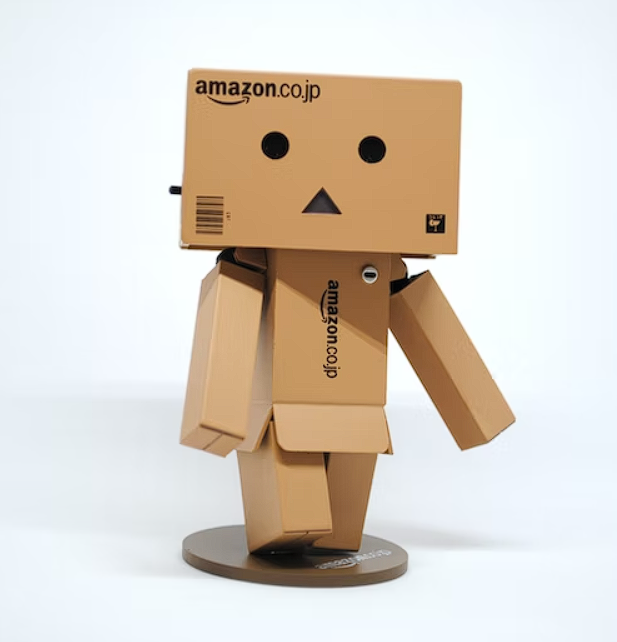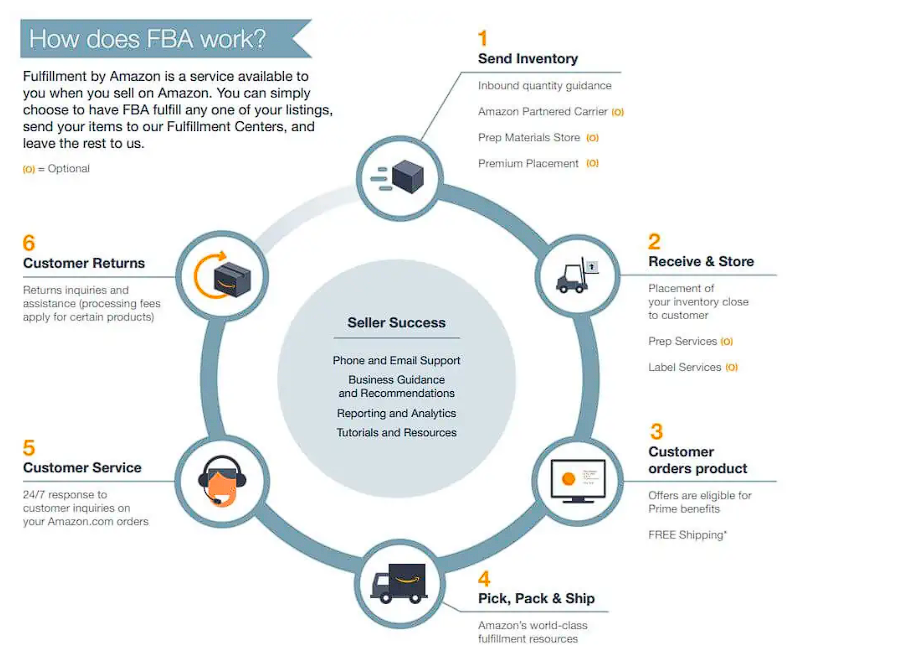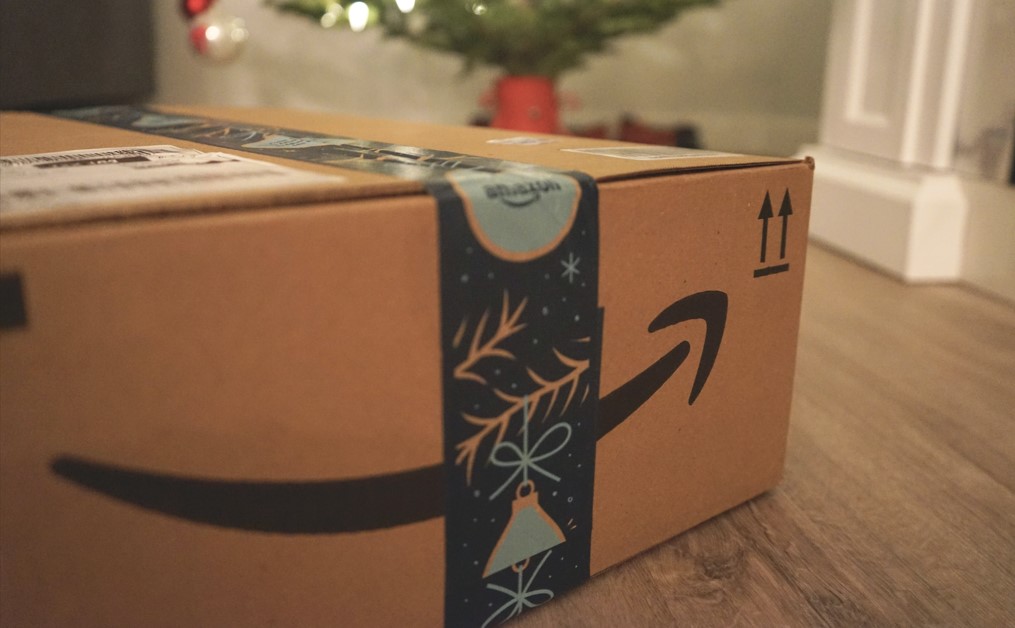
Amazon has built the largest fulfillment network in the world. With the Amazon Supply Chain, any business, regardless of size or industry, can utilize Amazon’s state-of-the-art fulfillment services to serve customers fast and reliably through any sales channel.
While it is possible to sell products on Amazon without the help of Amazon fulfillment services, it can save you both time and money. Whether you are selling handmade items or you decide to sell wholesale, Amazon’s supply chain can benefit your business immensely.
Let’s look at what exactly the Amazon Supply Chain is and how it works.
Table of Contents
What Is the Amazon Supply Chain?
The Amazon supply chain consists of third-party logistics solutions that help ecommerce businesses by managing the entire fulfillment process from product warehousing and inventory management to pricing and delivery. It allows ecommerce sellers to optimize their business operations and cut costs through multi-channel fulfillment.
What Is the Difference Between FBA and FBM?
Amazon offers two different fulfillment options, Fulfillment by Amazon (FBA) and Fulfillment by Merchant (FBM).
With Amazon FBA, companies send their products to Amazon fulfillment centers where Amazon will package and ship your orders when customers make a purchase. They also provide customer service and process returns for a small fee. This allows buyers to use Prime shipping as well.
In FBM, the seller manages and ships all their products independently through a third-party courier. It’s important to note that you can still take advantage of the one-day or two-day shipping that Fulfillment by Amazon offers.
Using FBA can cost more upfront, however, it can save sellers from having to manage all of the logistical work associated with selling ecommerce.
How Does the Amazon Supply Chain Work?
The Amazon Supply Chain encompasses the entire fulfillment process from receiving product inventory from businesses, all the way to delivering products to customers 1-5 days after they make a purchase.
Two core components drive Amazon’s supply chain to make it competitive: its fulfillment centers and delivery fleet.
Amazon Fulfillment Centers
Fulfillment centers are where Amazon stores, picks, packs, and ships customer orders.
There are over 200 fulfillment centers globally that encompass more than 200 million square feet of space in total. This is how Amazon is able to maintain its reputation for fast and reliable delivery. Prime two-day shipping has grown to the extent that some products can be delivered same-day.
Amazon Delivery Fleet
The other key piece to the Amazon supply chain puzzle is its delivery fleet. This component is responsible for getting products from the warehouse to the customer as fast as possible.
Amazon’s fleet of delivery vehicles is much more than just vans that deliver packages to your doorstep, it also consists of aircraft, tractor-trailers, bicycles, and more.
The ecommerce giant recently contracted electric vehicle manufacturer, Rivian, to make over 1,000 fully electric delivery vehicles for Amazon. The next move in delivery is drones, Amazon Air is the newest advancement in package delivery utilizing drones to deliver packages straight to consumers. While this is not available everywhere yet, it is likely to be within the next few years.
What’s Included in the Amazon Supply Chain

Warehousing
Having over 200 fulfillment centers in rural and urban areas allows Amazon to offer FBA services to third-party sellers everywhere.
These warehouses are where sellers store their inventory. Amazon will even distribute inventory across multiple fulfillment centers based on where your customer bases are regionally located to ensure timely shipping.
Once an order is placed, Amazon’s warehouse employees and robots pick the products and prepare them for shipping. This includes assembling product bundles.
Delivery
Whether the item you order is in a warehouse across the country or on the other side of the globe, Amazon has a range of transportation methods and delivery partners to get it shipped in record time.
Other online retailers require a third-party courier to deliver orders, and often have less predictable delivery times. With FBA, Amazon controls the delivery process every step of the way and is able to provide real-time order tracking for sellers and customers.
Prime 2-day shipping is one of the main reasons so many people order their must-have items from Amazon every day because of its speed and predictability.
Technology
Amazon is at the forefront of technology for ecommerce business solutions and is constantly developing new ways to improve operational efficiency and customer satisfaction.
One example is the company’s use of robotics for warehouse operations. These robots save time and money by automating and streamlining Amazon’s processes for picking, packing, and shipping products.
In the near future, Amazon’s Prime Air Drone Delivery program will allow customers to receive orders in as little as 30 minutes.
Manufacturing
What better way to make money and provide quality service than to manufacture your own products? That is exactly what Amazon started doing in just about every major product category.
Amazon offers everything from electronics and clothing to home decor and supplements. Amazon Basics, Amazon Essentials and Amazon Aware are the three lines of products that Amazon manufactures and always delivers with Prime shipping and free returns.
Pricing
Keeping prices stable and minimizing operational costs is a key factor in Amazon’s supply chain. While pricing fluctuates across every industry, it is important to maintain competitive pricing to keep customers coming back.
Amazon accomplishes this by optimizing storage space and offering different service levels for customers at varying costs.
For example, there are higher fees for FBA sellers to store products at an Amazon warehouse for long periods of time.This ensures sellers keep their inventory levels lean, allowing Amazon to maximize its storage space. And with Prime and Standard delivery options, it’s able to keep up with demand while sustaining a smooth order fulfillment flow.
Global Reach
Regardless of where you are located in the world, you can sell products through any one of Amazon’s 11 online marketplaces. This introduces businesses to new opportunities and customers across Asia, Europe, and North America. With the Amazon supply chain, you can seamlessly conduct business from anywhere in the world.
What Happens When You Sell (or Buy) Something on Amazon?
Whether you are buying or selling products on Amazon, those products have to go through multiple channels to get from the manufacturer to the customer.
1. Receiving Products
Businesses using FBA send their products to be stored at Amazon warehouses. It is important to have an idea of how quickly items will sell and only send enough to cover orders within a set period of time or else it will be more expensive for the seller to store their products at the fulfillment center.
2. Storing Products
Amazon utilizes AI and robotics in their warehouses to optimize efficiency. There is a computer database with every item that enters or exits the warehouse. Upon entry, products are stored according to size.
3. Picking Orders
When an order is ready to come off the shelf (or out of the bin), robots will pull items out and bring them to a picking station where an Amazon employee will read the order and pick the right product to be shipped to the customer.
4. Quality Assurance
Amazon has implemented strict quality assurance measures to keep customers happy. This goes beyond a quick turnaround time for products ordered. Amazon staff has to ensure that the robots and computer systems are operating properly at all times while focusing on their everyday responsibilities as well.
4. Product Packing
The final step in the process is packing items to be shipped to customers. Purchased items are sent to the pack station where Amazon staff will box the items based on recommendations provided by a computer system. This includes box size and the exact amount of tape required to seal the box.
Sell More on Amazon With Optimized Product Listings
Amazon’s best-in-class supply chain allows ecommerce businesses to quickly and reliably serve customers all over the world. With dedication to cost-effectiveness and constant tech innovation, it’s no wonder sellers trust Amazon to manage the order fulfillment process for them.
Utilizing the Amazon supply chain can be smart move if you are looking to optimize your ecommerce business strategy. However, the Amazon Supply Chain alone will not increase overall sales.
To steadily increase your sales, use an Amazon seller tool such as Sellesta.ai to optimize your product listings, conduct competitive research, and more. Sellesta.ai is an AI-powered solution that will optimize your product listings for Amazon SEO, making them more visible for the right customers. It can even provide a listing score for both you and your competitors’ listings to help you stay ahead of the competition.


